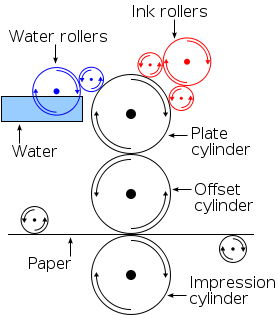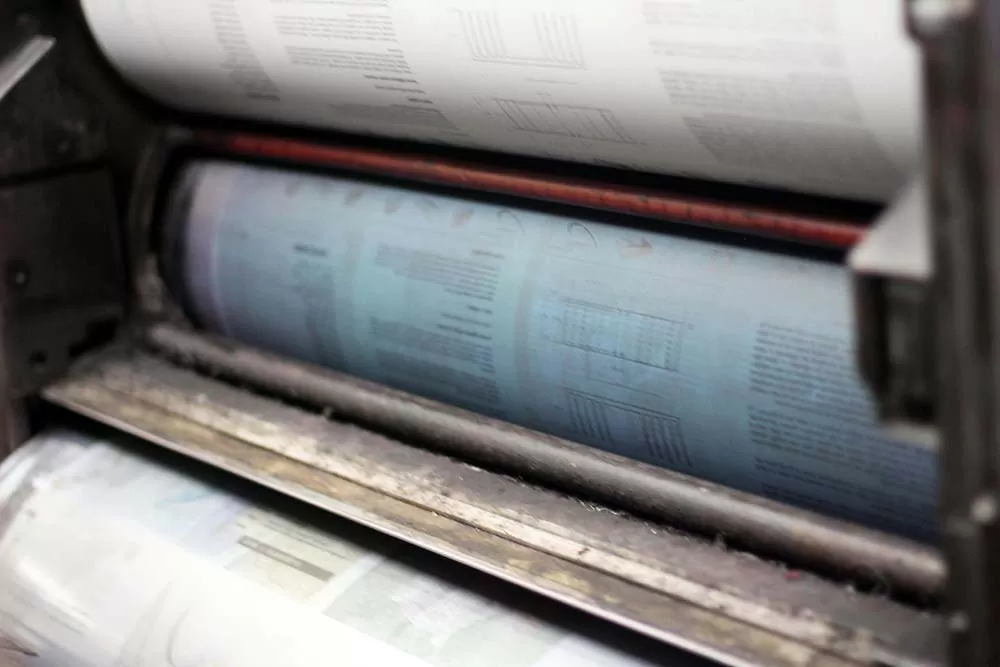PrintNinja - online printing made easy for creators
Cylinders
What are the cylinders used in the printing process and how do they work?

If you look inside the four compartments of the press that hold the ink fountains, you will see something similar to the diagram at the right. Each of those four assemblies is made up of many moving cylinders which are intrinsic to the offset, or lithographic, printing process.
Plate Cylinder
The printing plate – embedded with your file images – is wrapped around the plate cylinder and rotates while water and ink are distributed onto its surface. The plate transfers ink to the rubber blanket, which is wrapped around the offset cylinder.
Rubber Blanket / Offset Cylinder
The offset cylinder is home to the rubber blanket that receives ink from the plate above. This cylinder rotates until the rubber blanket makes contact with a parent sheet moving along the conveyor belt, transferring the ink onto it.
Impression Cylinder
The impression cylinder sits directly underneath the rubber blanket and applies pressure to the paper – moving in between both cylinders – while the paper absorbs ink from the blanket at the same time.

Inside the Press
This is the inside of one press compartment. The top cylinder is the plate that has already been rolled with water and ink from above. The plate rotates and transfers ink to the rubber blanket, the blue cylinder. The final cylinder on the bottom, the impression cylinder, applies pressure to the paper as it passes under the blanket.